India's largest cow hospital provides care for 1,600 cows, bulls, oxen, that are sick, diseased, injured or deformed.
With wards for cows with breast cancer, cows that have lost their legs in road accidents, cows that have been operated upon to remove plastic from their bellies, the hospice is a tourist attraction in Rajasthan's Nagaur district.
On the fifth leg of their 2,148 km journey, Rediff.com's Archana Masih and photographer Rajesh Karkera visit the hospital.
- Day 1: Dehradun: 7 States. 6 Days. 2,148 km and a journey of a lifetime
- Day 2: Ramgarh village: This girl is going to grow vegetables after a PhD
- Day 3: Rising Bathinda takes on Udta Punjab
- Day 4: Where have the dhabas gone?

Day 5: Nagaur, Rajasthan
There are some things best understood in Hindi. 'Lawaris sand' is one of them. Translate it to 'abandoned bulls' and it deprives the animal of its desi, rustic, earthy masculinity.
We screech to a halt seeing 'Lawaris sand' written on a large shed on the road to Jodhpur from Deshnoke. Kishtoram, a man in a bright yellow uniform, stands by the wayside selling green cattle feed or Rijga.
Three bunches for Rs 10, that passerby can buy and feed the cattle.
Kishtoram says ten people are employed here and he earns Rs 11,000 a month, but if we want to see the real thing, we should drive on to Nagaur where the country's largest cow hospital is located.
After complimenting him on the bright red ear studs and taking a tour of the shed, we set out under a blazing sun towards Jodhpur.
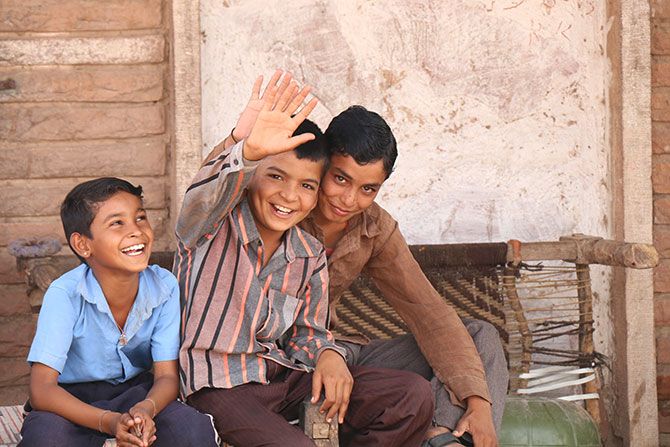
The desert lies flat around us. The road I am told is made of a special material that can withstand the scorching heat. The summer is at its peak in Rajasthan. Up ahead, in Phalodi, temperatures have hit a crazy 51 degrees but for folks like us coming face to face with the Thar desert for the first time, the sun proves a weak deterrent.
The previous day, a short walk on the sand dunes in the Chhattargarh district, strips some of the rubber off my worn out sneakers. The grains smoulder under touch, yet how could one be in the middle of the Thar and not hold a fistful of sand!
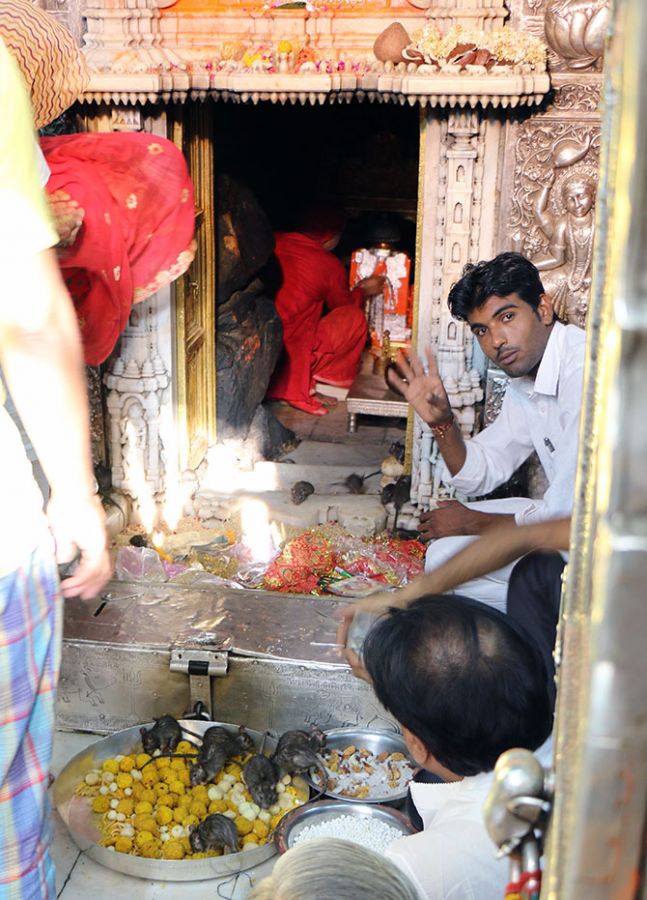
On the way to Nagaur lies Deshnoke, famous for its 700-year-old Karni Mata temple, known worldwide as the Rat Temple.
The rats hang around door-posts, nooks, alcoves – clusters of them drink milk from vessels, and languor about within the temple walls. Umed Singh, a temple worker, tells me the rats never leave the main door.
One hundred and twenty employees wash the temple precincts of the rat droppings thrice a day. Among the thousands of rats inside the temple, he says one would always see rats of the same size. "Adhbut hai (it's amazing), and there are only 5 white mice," he says, "You are lucky if you spot one."
"Look, there is one," he says, pointing to a vessel of milk, its circular rim ringed with a string of rats. In that pack of 50 to 60 rats is a white one, which I only spot after much help from Umed Singh.
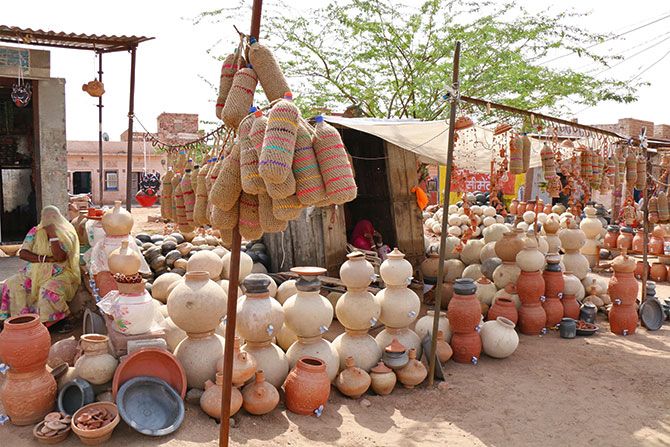
It is around 8 am by the time we step out of the temple, but it looks and feels as if it is noon. We have stored frozen bottles of water wrapped in newspaper. Near a village water tap ahead, women sell knitted water bottle holders for Rs 100, designed to hold 2 litre cola-sized bottles.
An old couple beckons us from the doorstep of their home and offer a lota of water. We are restricted by language, they speak in theth Rajasthani, us, in Hindi, yet we understand each other, which is the beauty of our country. Ours is a culture that inherently unites and this is one trait we must practice every day and preserve at all cost.
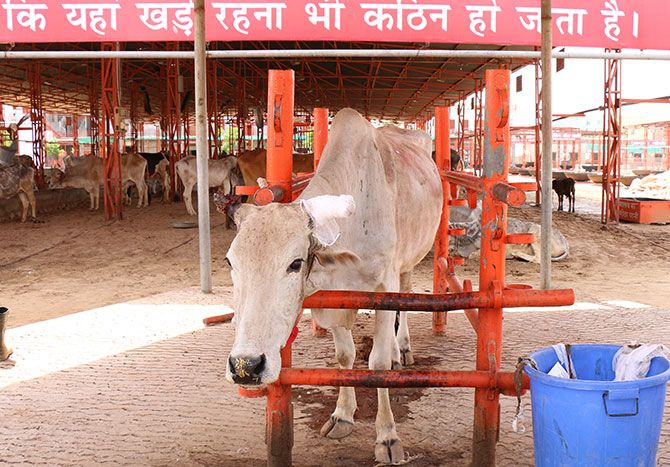
Outside the cow hospital on the Nagaur-Jodhpur highway, volunteers in white kurta-pajamas greet visitors with cups of tea served free of cost. Passersby stop to take a round of the hospital, which is a local tourist attraction.
"This tea is like gaumata ka prasad," says Mukesh, a sevak or guide, with a smile, as he makes us sit at the reception and offers a cup of sweet tea.
Unfazed by the searing heat, he painstakingly takes me around the hospice where 1,600 cows, bulls and oxen are treated for deformities, injuries, cancer and operated upon to remove plastic from their bellies.
I am told 77 kilos of plastic was removed from one bull's stomach after a two-hour operation recently.
Stop using plastic, people, pick up that cloth jhola!
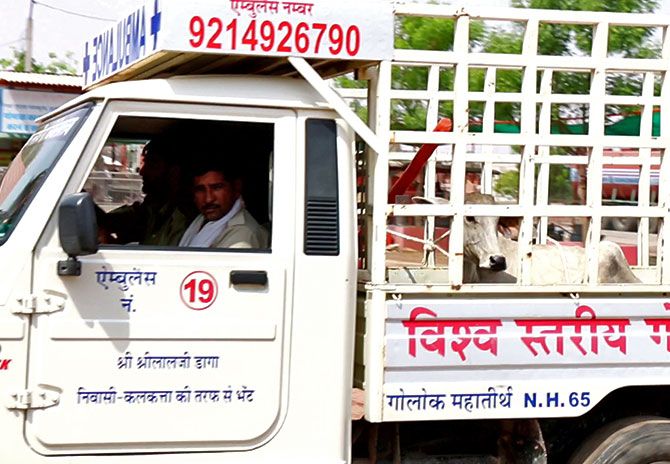
The animals are kept under giant tents, each called a ward where the cattle are segregated according to the disease or injury. There is also an ICU, says Mukesh.
'Cows stricken with cancer', 'three-legged cows', 'five legged cows' -- such banners hang outside each tent.
"We have operation theatres where doctors conduct surgeries. They are done in the day and night," says Mukesh, taking me to the 'cancer ward' where a banner says that you would not be able to stand here if the cows were not bandaged everyday -- so foul is the stench from the wounds.
Twenty one ambulances transport cows to the facility from a 300 km radius. "Those who bring their sick cows, we give them two healthy cows in return," says Mukesh, adding that the hospital is run on donations from gau bhakts and well wishers.
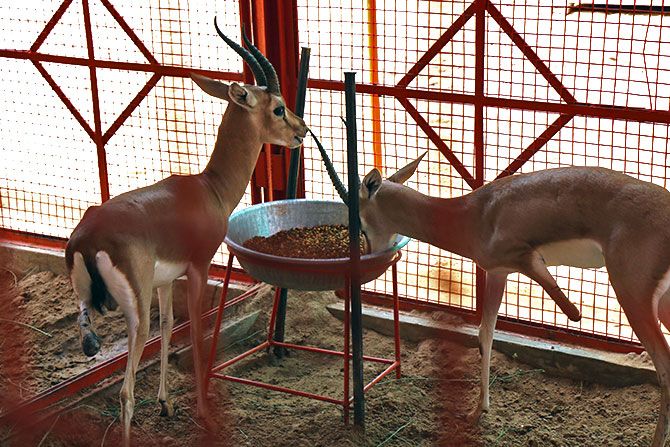
In many shops and dhabas along the highway, one notices donation boxes for the hospital. The construction of another hospital is underway in Jodhpur.
The daily cost of running the hospital amounts to Rs 4.5 lakh (Rs 450,000). Eight tons of broken wheat (dalia/lapsi) is cooked every day. Gau bhakts donate green vegetables, says Mukesh.
A board on the premises says that water sourced from the Himalayas is provided to the cattle and brought in tankers. Information about the working of the hospital is labeled clearly for visitors to read.
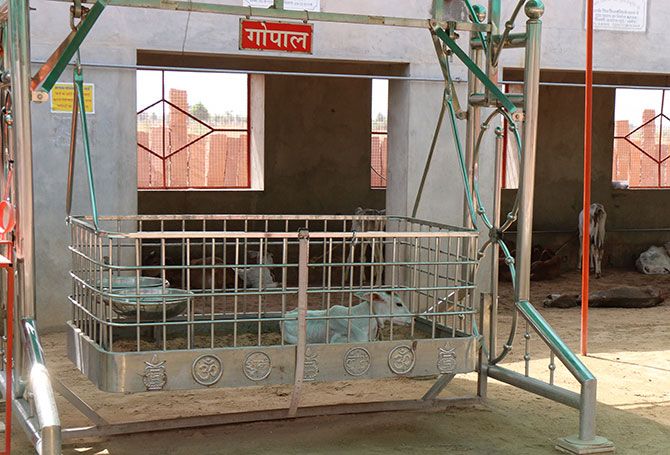
There are cradles for calves and blankets stocked for each cow for the winter months.
Established by Swami Kushagiriji Maharaj who lives down a door which reads 'gufa ka marg' (path to the cave). Mukesh says the hospice was started in 2008 with one cow. He tells me the Swami spends the whole day in dhyan (meditation) and comes out once in the morning and evening.

The first cow is called Nanda Kamdhenu and occupies pride of place in the hospital's precincts. Worshipped as a deity, she sits under a shed and wears a velvet cloak. Devotees perform a parikrama and apply tilak on its forehead.
On Mahavir Jayanti, April 19, the sacred cow walked under a parasol as devotees followed her in a procession. A monthly magazine named after the deity says the procession was kept free of modern trappings like mobile phones, pens, watches and was a reminder of how gau mata was worshipped regally in ancient times.
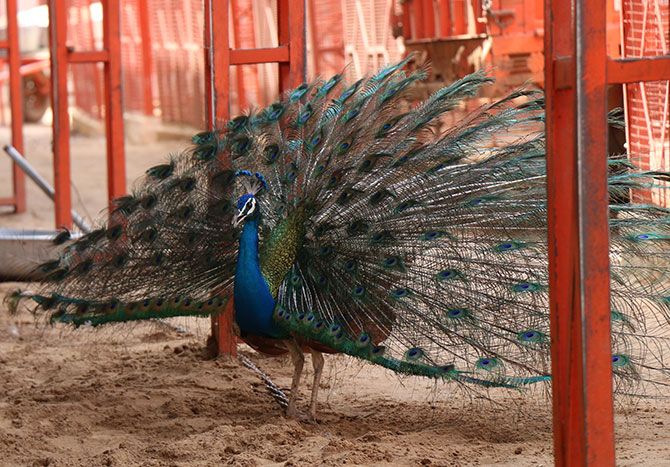
The hospital also provides care to a few birds and animals. A peacock struts around the ward for deformed cows as a group arrives to see the hospital. The women wear beautiful Rajasthani ghagras and are made to sit in the reception area. Visitors are first offered tea and then taken around the hospital by the guides.
Sehdev, one of the guides, is a man with a pleasant demeanour and cheerfully greets people at the entrance in spite of the heat. He is a school teacher and has come to serve at the hospital during the summer vacation.
The magazine that he gave me as I make my way out, carries an announcement for guides (salary: Rs 13,000) ambulance drivers (12,000), journalist (18,000), people to feed sick cows (Rs 10,800), setting up of donation boxes (13,000) etc.
It calls for teachers to provide service for a salary or free of cost but asks only those who have a temperament of service to apply.
"I had two months holiday and could not think of a better way to spend the summer," says Sehdev folding his hand in a Namaste as he walks me to the car.
"Mere liye yeh hi seva hai (This is my way to serve)."










